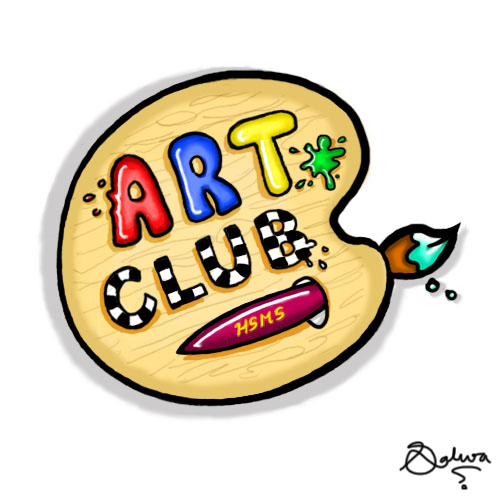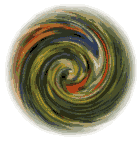Art Periods/
Movements |
Characteristics
|
Chief Artists and Major Works
|
Historical Events
|
Stone Age (30,000 b.c.–2500 b.c.)
|
Cave painting, fertility goddesses, megalithic structures
|
Lascaux Cave Painting, Woman of Willendorf, Stonehenge
|
Ice Age ends (10,000 b.c.–8,000 b.c.); New Stone Age and first permanent settlements (8000 b.c.–2500 b.c.)
|
Mesopotamian (3500 b.c.–539 b.c.)
|
Warrior art and narration in stone relief
|
Standard of Ur, Gate of Ishtar, Stele of Hammurabi's Code
|
Sumerians invent writing (3400 b.c.); Hammurabi writes his law code (1780 b.c.); Abraham founds monotheism
|
Egyptian (3100 b.c.–30 b.c.)
|
Art with an afterlife focus: pyramids and tomb painting
|
Imhotep, Step Pyramid, Great Pyramids, Bust of Nefertiti
|
Narmer unites Upper/Lower Egypt (3100 b.c.); Rameses II battles the Hittites (1274 b.c.); Cleopatra dies (30 b.c.)
|
Greek and Hellenistic (850 b.c.–31 b.c.)
|
Greek idealism: balance, perfect proportions; architectural orders(Doric, Ionic, Corinthian)
|
Parthenon, Myron, Phidias, Polykleitos, Praxiteles
|
Athens defeats Persia at Marathon (490 b.c.); Peloponnesian Wars (431 b.c.–404 b.c.); Alexander the Great's conquests (336 b.c.–323 b.c.)
|
Roman (500 b.c.– a.d. 476)
|
Roman realism: practical and down to earth; the arch
|
Augustus of Primaporta, Colosseum, Trajan's Column, Pantheon
|
Julius Caesar assassinated (44 b.c.); Augustus proclaimed Emperor (27 b.c.); Diocletian splits Empire (a.d. 292); Rome falls (a.d. 476)
|
Indian, Chinese, and Japanese(653 b.c.–a.d. 1900)
|
Serene, meditative art, and Arts of the Floating World
|
Gu Kaizhi, Li Cheng, Guo Xi, Hokusai, Hiroshige
|
Birth of Buddha (563 b.c.); Silk Road opens (1st century b.c.); Buddhism spreads to China (1st–2nd centuries a.d.) and Japan (5th century a.d.)
|
Byzantine and Islamic (a.d. 476–a.d.1453)
|
Heavenly Byzantine mosaics; Islamic architecture and amazing maze-like design
|
Hagia Sophia, Andrei Rublev, Mosque of Córdoba, the Alhambra
|
Justinian partly restores Western Roman Empire (a.d. 533–a.d. 562); Iconoclasm Controversy (a.d. 726–a.d. 843); Birth of Islam (a.d. 610) and Muslim Conquests (a.d. 632–a.d. 732)
|
Middle Ages (500–1400)
|
Celtic art, Carolingian Renaissance, Romanesque, Gothic
|
St. Sernin, Durham Cathedral, Notre Dame, Chartres, Cimabue, Duccio, Giotto
|
Viking Raids (793–1066); Battle of Hastings (1066); Crusades I–IV (1095–1204); Black Death (1347–1351); Hundred Years' War (1337–1453)
|
Early and High Renaissance (1400–1550)
|
Rebirth of classical culture
|
Ghiberti's Doors, Brunelleschi, Donatello, Botticelli, Leonardo, Michelangelo, Raphael
|
Gutenberg invents movable type (1447); Turks conquer Constantinople (1453); Columbus lands in New World (1492); Martin Luther starts Reformation (1517)
|
Venetian and Northern Renaissance (1430–1550)
|
The Renaissance spreads north- ward to France, the Low Countries, Poland, Germany, and England
|
Bellini, Giorgione, Titian, Dürer, Bruegel, Bosch, Jan van Eyck, Rogier van der Weyden
|
Council of Trent and Counter-Reformation (1545–1563); Copernicus proves the Earth revolves around the Sun (1543
|
|
|
Art that breaks the rules; artifice over nature
|
Tintoretto, El Greco, Pontormo, Bronzino, Cellini
|
Magellan circumnavigates the globe (1520–1522)
|
Baroque (1600–1750)
|
Splendor and flourish for God; art as a weapon in the religious wars
|
Reubens, Rembrandt, Caravaggio, Palace of Versailles
|
Thirty Years' War between Catholics and Protestants (1618–1648)
|
Neoclassical (1750–1850)
|
Art that recaptures Greco-Roman grace and grandeur
|
David, Ingres, Greuze, Canova
|
Enlightenment (18th century); Industrial Revolution (1760–1850)
|
Romanticism (1780–1850)
|
The triumph of imagination and individuality
|
Caspar Friedrich, Gericault, Delacroix, Turner, Benjamin West
|
American Revolution (1775–1783); French Revolution (1789–1799); Napoleon crowned emperor of France (1803)
|
Realism (1848–1900)
|
Celebrating working class and peasants; en plein air rustic painting
|
Corot, Courbet, Daumier, Millet
|
European democratic revolutions of 1848
|
|
|
Capturing fleeting effects of natural light
|
Monet, Manet, Renoir, Pissarro, Cassatt, Morisot, Degas
|
Franco-Prussian War (1870–1871); Unification of Germany (1871)
|
Post-Impressionism (1885–1910)
|
A soft revolt against Impressionism
|
Van Gogh, Gauguin, Cézanne, Seurat
|
Belle Époque (late-19th-century Golden Age); Japan defeats Russia (1905)
|
Fauvism and Expressionism (1900–1935)
|
Harsh colors and flat surfaces (Fauvism); emotion distorting form
|
Matisse, Kirchner, Kandinsky, Marc
|
Boxer Rebellion in China (1900); World War (1914–1918)
|
Cubism, Futurism, Supremativism, Constructivism, De Stijl (1905–1920)
|
Pre– and Post–World War 1 art experiments: new forms to express modern life
|
Picasso, Braque, Leger, Boccioni, Severini, Malevich
|
Russian Revolution (1917); American women franchised (1920)
|
Dada and Surrealism (1917–1950)
|
Ridiculous art; painting dreams and exploring the unconscious
|
Duchamp, Dalí, Ernst, Magritte, de Chirico, Kahlo
|
Disillusionment after World War I; The Great Depression (1929–1938); World War II (1939–1945) and Nazi horrors; atomic bombs dropped on Japan (1945)
|
Abstract Expressionism (1940s–1950s) and Pop Art (1960s)
|
Post–World War II: pure abstraction and expression without form; popular art absorbs consumerism
|
Gorky, Pollock, de Kooning, Rothko, Warhol, Lichtenstein
|
Cold War and Vietnam War (U.S. enters 1965); U.S.S.R. suppresses Hungarian revolt (1956) Czechoslovakian revolt (1968)
|
Postmodernism and Deconstructivism (1970– )
|
Art without a center and reworking and mixing past styles
|
Gerhard Richter, Cindy Sherman, Anselm Kiefer, Frank Gehry, Zaha Hadid
|
Nuclear freeze movement; Cold War fizzles; Communism collapses in Eastern Europe and U.S.S.R. (1989–1991)
|
Welcome! This blog is dedicated to relaying art information for Oak Grove Elementary School. Note that the latest art information as of the school year 2023-2024 is available on Schoology.
Wednesday, March 28, 2012
History of Art Resources
The history of art is immense, the earliest cave paintings pre-date writing by almost 27,000 years! If you're interested in art history, the first thing you should do is take a look at this table which briefly outlines the artists, traits, works, and events that make up major art periods and how art evolved to present day:
Reference:
Wednesday, March 21, 2012
Next Meeting
Our next meeting is scheduled for Wednesday March 28 at 2:00pm.
Please bring the art works that you want to display for our Art Club Show.
Also, do not forget to visit our resource page on this site to help you with new projects.
See you soon!
Ms.Wawa

Please bring the art works that you want to display for our Art Club Show.
Also, do not forget to visit our resource page on this site to help you with new projects.
See you soon!
Ms.Wawa

Subscribe to:
Posts (Atom)
























